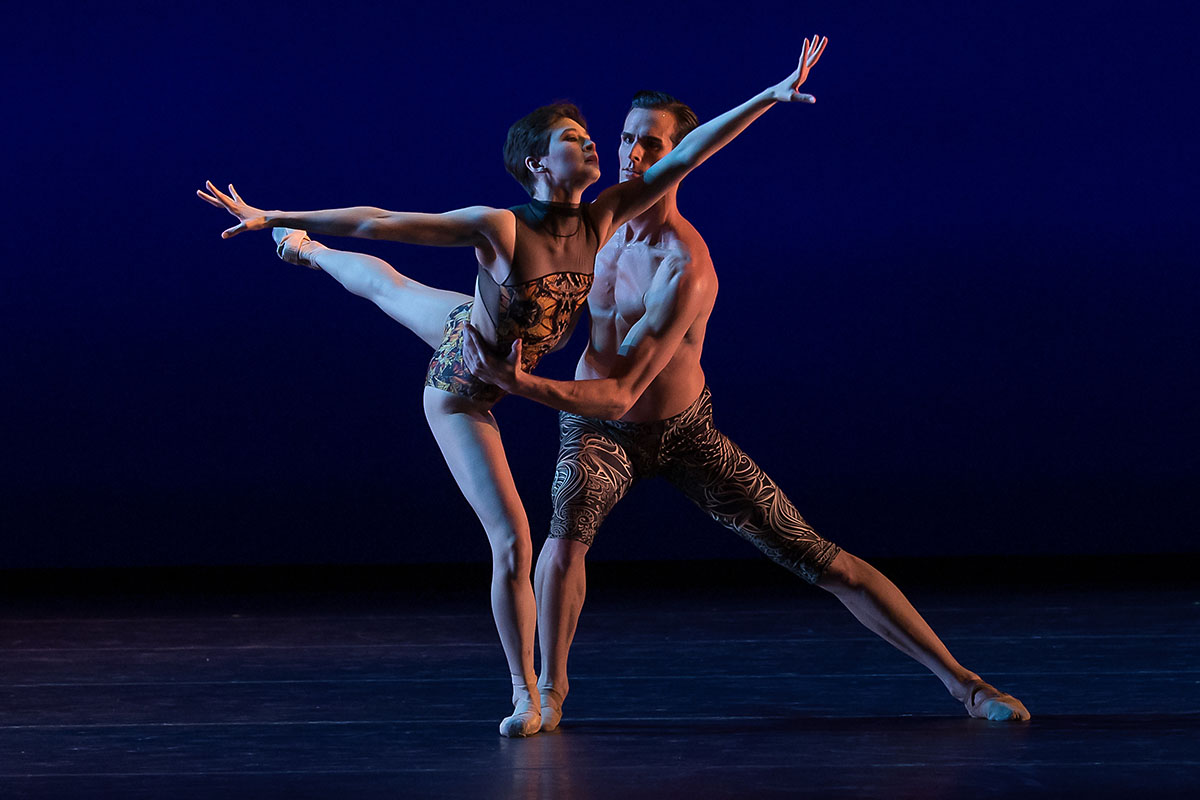From Nashville Ballet
New in Nashville
On the weekend of April 21st Nashville Ballet gave the last performance of their ’22-’23 season featuring a company premiere choreography Snowblind by Cathy Marston and world premiere choreography In the Time I Lived by Donald Byrd as well as a reprise of Matthew Neenan’s Hilos (premiered this year at the Fisher Center) and a return of Paul Vasterling’s great Appalachian Spring (premiered at the Schermerhorn in 2017). While the overall performance was billed as “New in Nashville,” there was a Janus-faced element to the evening as it celebrated not only the retirement of Director Vasterling, but also the retirement of two of the primas that have come to define the Nashville company—Mollie Sansone and Julie Eisen. Indeed, collaboration among these three artists have resulted in the productions that have put Nashville Ballet on the map.
The resumes of these two dancers are as long as they are deep in contemporary masterworks: Eisen playing Fortuna in Vasterling’s Carmina Burana, or as Blanche Dubois in Ochoa’s Streetcar Named Desire, Sansone as Lady Macbeth in Vasterling’s Something Wicked, or Lizzie in his Lizzie Bordon, the two women have danced (and acted) some of the most complicated characters in the literature. They have provided Vasterling and many other choreographers with a masterful palate and a stunning interpretive acuity that has come to be expected by the Nashville audiences. On Friday, it was no different.
Adapted from Edith Wharton’s Ethan Frome, Marston’s Snowblind pitched Eisen and Sansone on either side of a stretched and empathetic Ethan (Brett Sjoblom), negotiating themselves into a trio of codependency. Eisen’s graceful, heightened Zeena, expressing a majestic authority when en pointe, and yet sickly and doubtful, contrasted sharply with Sansone’s Mattie, bright in youthful vigor and passion. The ensemble’s snow, here supportive, there obstructive and confrontational, brought out the troubling nature of the story (and Arvo Pärt’s equally troubling and beautiful score, Lamentate).
Neenan’s Hilos, setting music of the same name composed by Gabriela Lena Frank, featured an onstage quartet of Gerald Greer (Violin), Kevin Bate (Cello), Daniel Parrette (Clarinett) and Alessandra Volpi (piano). In particular, Greer’s heavy pizzicato part, crossed genres and drove the music forward as the ensemble brought the music to life in a fairly abstract depiction.
Donald Byrd’s In the Time I Lived, has a grounded narrative, but who the dancing characters were, and how they were related, was left fairly abstract. Their involvement in the main character’s life was, in some ways, made quite clear–a child clinging to a doll or authority figures in smiling approval, but in others ways they reached into the absolute and/or the private. In any case, from life to death, relative newcomer (2021) Garritt McCabe danced the title’s subject with charismatic flair and a beaming smile, while the company around brought him (and us) through his various stages of life. As I watched the company perform, and lost myself in the narrative, (as I had been in Hilos) I was struck by the depth of the talent in the company. Names like Buchanan, Stark and Borman aren’t standing out from the program yet, but they sure are incredible to watch on the stage. It occurred to me that this was probably the “New” to which the title of the evening’s production referred to.
Over a decade ago, Vasterling joined a company in Nashville that had only 8 professional artists. It now features 35. Like Franz Josef Haydn did at Esterháza, or Duke Ellington did with his Orchestra, Vasterling has grown an ensemble and community of individuals within an artistic tradition that emphasizes and prizes the idiosyncratic. Just as Eisen and Sassone have each occupied a different place, role and purpose in Nashville Ballet, complementing and supporting each other, (as Kayla Rowser and others did before) each member of the company has or is in the process of realizing their own voice and place. Their retirement is certainly a harbinger of something “New in Nashville,” but we feel certain that in Nashville, these new voices will have the opportunity to reach their highest artistic potential.
In the final moments of his Appalachian Spring, when Eisen’s character, after leading the entire company, one after the other, into the spotlight, falls back into the community’s arms, Vasterling’s career is reflected on his stage. If the new Director Nick Mullikin can maintain this tradition, the future is extraordinarily bright for the Nashville Ballet.




